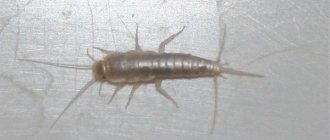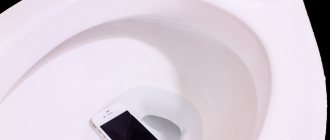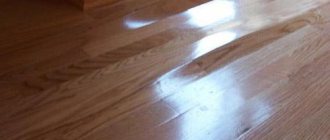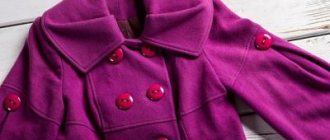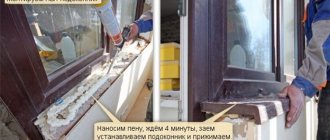Additional recommendations
All the methods discussed will help you clean your outerwear from external defects. This procedure is not a one-time procedure; it will have to be performed repeatedly throughout the season. All this negatively affects the condition of the tissue, since the mechanical impact injures it. To protect your coat from premature wear, you need to reduce the pilling process.
How to treat a coat to prevent pilling
To make the fabric fibers less likely to pill, you need to treat the coat with an antistatic agent. As the latter, you can use food vinegar, adding it when washing or when rinsing a coat. It not only gets rid of static charge, which is a catalyst for increased pill formation, but also neutralizes detergent residues well, softens fabric fibers, and also preserves the original color of the product. For rinsing, it is enough to add about 200 ml of this product.
There are no special means to prevent the appearance of pellets - it is impossible to completely prevent their appearance. You can only wear and maintain the item correctly - this is a guarantee that it will serve for many years: at least 3-5 seasons.
How else to prevent the formation of pilling on your coat
It is impossible to completely prevent the formation of pills on outerwear. However, it is quite possible to reduce the pilling process. To do this, it is necessary to eliminate the factors that injure the fibers when wearing and maintaining the coat:
- strictly follow the manufacturer’s recommendations for cleaning, washing and storing outerwear;
- do not use machine wash, even if it is allowed;
- wash only in warm water;
- do not use crystalline powders - only gels, shampoos and conditioners for delicate washing;
- Do not wring out your outerwear by twisting it - the water should drain on its own;
- do not dry the product near heating devices;
- It is not recommended to iron a coat; if ironing is allowed, then only through gauze or cotton cloth;
- do not drag your coat - alternate outerwear if possible - let it “rest”.
And lastly, if you are not confident in your abilities or doubt the choice of one method or another, then it is better to contact a dry cleaner. Although this is expensive, the safety of your favorite thing and your own peace of mind are more valuable.
The best way
Experienced housewives have accumulated more than a dozen ways to get rid of unsightly lumps on coats. Among them, there are obviously ineffective ones, but there are some very good ones, however, choosing the most effective one is not so easy. Some cope with large wear defects, others with small ones. When choosing the appropriate option, you will have to take into account the characteristics of the fabric, for example, the presence or absence of pile, its length. In addition, it is important to consider the size of the coat and the risk of damage. The best method is likely to be one that minimizes the risk of damage while keeping the material as clean as possible.
The easiest way
The simplest option for cleaning coats from pellets is to use a toothbrush. You can remove it with an old brush; the fabric is processed along the fibers until the problem is completely eliminated. There is one limitation: this technique will only be effective for materials with long pile.
Special machine
For those who have a small reserve of free money, the best and easiest way to remove pellets is with a machine designed specifically for self-cleaning. It is possible to adjust the height of the knives; this guarantees reliable protection from damage and allows you to process coat fabric with a complex surface. Other advantages include saving time and the versatility of the method.
Cotton.
Cotton symbols: algodon (Spanish), cotton (English), baumwoole (German).
Cotton fabrics include: chintz, denim, cambric, calico, pique, poplin, voile, rosin, teak, percale, nansook, organdy.
You may hear the words mercerization, mercerized cotton. Mercerization is a special treatment of fibers with caustic soda (sodium hydroxide alkali). Gives fabric shine, prevents fading, increases strength. To prevent a cotton item from wrinkles, the fabric is treated with urea-formaldehyde or melamine-formaldehyde resin.
Hairstyles for yourself - how to make the most fashionable and beautiful hairstyles with your own hands (100 photos)
Natural fabrics shrink, remember this when caring. Read and follow the instructions on the product label.
Precautionary measures
And now you have been inspired by the simplicity of the actions, outlined the scope of work and are ready to get down to business. Wait! Be sure to read our recommendations so that you don’t have to spend money on buying new things after unsuccessful attempts at resuscitation.
- For models with long piles, choose methods where you can cut or shave the boulders rather than comb them out.
- Do not press down on the fabric with all your force; keep your hand slightly in the air so as to directly touch the loose threads, but not the main fabric.
- From year to year, from season to season, you shouldn’t constantly detox your blouses and sweaters. One day the tissue may simply become exhausted.
Please note that if shaggyness appears again and again, it means you have chosen the wrong method of caring for the product. More on this below.
Causes of pilling on clothes
Why do pills appear on fabric? First of all, the origins of the problem should be sought in the composition of the fabric. Natural fibers tend to be amenable to abrasion and thread twisting. Synthetic materials suffer from this “disease” much less frequently, especially if they are properly prevented with special chemicals. If we talk about proper laundry care, you should pay attention to the drying process. Fabrics that do not tolerate heat treatment well must be dried in a special way. It is forbidden to use an iron to smooth them. Areas of clothing that constantly rub against something are susceptible to frequent pilling. So, on a sweater, the area under the armpits can be considered a “sore” spot, and on trousers – at the painful points.
How to drink beet juice - with health benefits. Beneficial properties and harm of beet juice
How to clean a coat from pellets at home: from folk to professional methods
Razor
The procedure is very simple: armed with a razor, carefully run it from bottom to top across the fabric, very carefully cutting off lumps.
Despite its availability, this method can be dangerous due to the lack of necessary skills and non-compliance with instructions. How to remove pellets from a coat at home with a razor:
- the razor must be old and dull enough (too sharp blades can irreversibly damage fragile material);
- Before processing, the fabric must be stretched well and kept “tight” all the time;
- The method is only suitable for smooth, dense fabrics without texture, but in no case should it be used for cashmere, mohair or angora.
Duct tape
If lumps have just begun to appear, regular tape or adhesive tape will help fight them. An important condition is that the device must be really very sticky, so if you only have very old tape lying around at home, it is better to go and buy a new and more durable one. The process itself is very similar to depilation: you stick a strip on the fabric, press it firmly with your hands, and then tear it off with a sharp movement from the bottom up.
Life hack: if you don’t have adhesive tape at hand, a wide patch or wool roller can help out.
Comb
If you have a comb with very fine, short teeth, you can also use it to care for woolen jackets. Just comb the fabric along the fibers 2-3 times.
Remember: the more carefully you remove the lumps, the less of them remain on the fabric. The same adhesive tape or razor will help remove the residue.
Toothbrush
Rub the fabric, moving from top to bottom along the fibers of the fabric until all the pellets are gone.
Important: this device is only suitable for fabric with a long pile.
Scissors
This is labor-intensive, but the method eliminates pellets. It is almost impossible to damage the material if you are careful.
Remove lumps as follows:
- First, the fabric is placed on a hard work surface and stretched well;
- then it is advisable to comb the pile using a comb or toothbrush;
- After that, each lump is slowly and carefully cut off with nail scissors.
Important: this method is best suited for cleaning large pellets in a small area when they have just begun to appear.
Sandpaper
For a smooth, lint-free coat, you can take fine-grained sandpaper and work the surface well with it. The method prevents the defect from appearing for a long time, but be careful: if you press too hard, you can damage the fabric. If you use it frequently, the material may become thinner.
Hard washcloth
A simple way to get rid of pilling on your coat. Buy a new, hard washcloth and start dry processing. To do this, moving in the direction of the fibers, move the washcloth over the fabric for several minutes. There is no need to wet it or the material.
An alternative tool is the hard side of a new dish sponge.
Stale bread
If you don’t have a washcloth or sandpaper, you can prepare their equivalent at home from a piece of black bread. Take a thick piece, preferably from the crust side, so that it crumbles less. Then toast it well in the oven or toaster so that you get a very hard cracker, and start processing.
Folk remedies
Cleaning coats from pellets at home is a more economical option; you can get by with improvised means without spending a penny. Fortunately, the choice of methods is wide, you can choose the most affordable one for you.
Razor
This method is considered one of the fastest and most dangerous. A too sharp razor or careless movement can easily damage the coat. Therefore, when acting in this way, a number of conditions must be met:
- the razor should not be new;
- the material should be stretched;
- you need to cut as carefully as possible;
- direction of movement from bottom to top.
This is ideal for knitwear with a smooth texture. It is not suitable for textured fabrics, products made from mohair, cashmere, and angora.
Scotch
The method is suitable for pellets that have just begun to appear. But even in this case, there is no guarantee of complete cleaning. The principle of action is similar to epilation:
- the tape is glued to the treated area;
- carefully pressed to the surface;
- is removed with a sharp jerk.
It is recommended to choose the stickiest tape that will allow you to collect the maximum amount of pellets on your coat. An alternative could be a wide patch.
Scissors
The least convenient option; cleaning will require a lot of time and effort, while the risk of damaging the material remains high. To clean your coat this way you will need:
- stretch the fabric;
- pre-comb the pile;
- Slowly and carefully cut off each lump.
The method will be too labor-intensive for small pellets. It is better to use it at the beginning of the problem, when the pile rolling has just begun.
Comb
To remove pellets, use a fine-toothed comb. The coat is combed along the fibers; the more thoroughly the combing occurs, the fewer lumps will remain. Residues are removed with a razor or tape.
Bread crumb
Gray or black bread, dried in the oven, is suitable. To make the piece crumble less, you need to cut it thicker, preferably from the crust side. When the cracker is ready, remove the pellets using gentle movements from top to bottom.
Sandpaper
It is not recommended to use coarse sandpaper to remove pellets; it is also not advisable to use this method for coats with pile.
The surface of the product is processed until the defect is completely eliminated. The pressure on the treatment area should not be too strong so as not to damage the material.
Hard washcloth
The method is similar to most of the previous ones. It will require a new washcloth. There is no need to wet it, cleaning is done dry, moving in the direction of the fibers.
Trade secrets.
There are ways to reduce the ability of any fabrics and fabrics to form pills. Unfortunately, whether the fabric has undergone special processing or not, the average consumer will hardly be able to find out how high-quality fibers were used in the production of the fabric.
Pillability is affected by fiber composition, thread structure, fabric structure and finishing. The less return (waste) was used in production, the lower the pillability. The use of longer fibers, thinning of the cross section, increasing the twist of threads and reducing the length of overlap in the fabric, reducing the length of the loop and the use of special chemical impregnations also leads to a decrease in pillability. They use singeing, cutting products, and heat setting.
Legend for fabric composition:
Luxury clothes and pellets.
Oddly enough, men are luckier in this matter than women. By buying a super wool suit, a 100% cotton pique polo and chino trousers, they can be 99% sure that the pilling problem will not affect them. And with knitwear in the luxury segment, as well as in the middle segment, everything is fine.
In women's luxury wardrobe there are more items of clothing that say 100% polyester. Cocktail and evening dresses, lingerie, and beachwear are almost 100% made from synthetic fibers. Is it another synthetic? I want to believe it, because you can only check it while wearing it. In my experience and the experience of my clients, synthetic clothes, even branded ones, are still susceptible to pilling.
Garment care and pellets.
It is important to remember that care does not affect the formation of pellets. Improper care can ruin a thing (it can shrink, fade, become deformed, etc.), but improper care cannot cause the formation of pili!
Buy wisely, ultimately the choice is yours! Share your experience!





